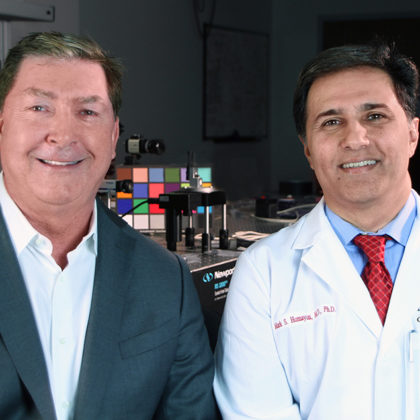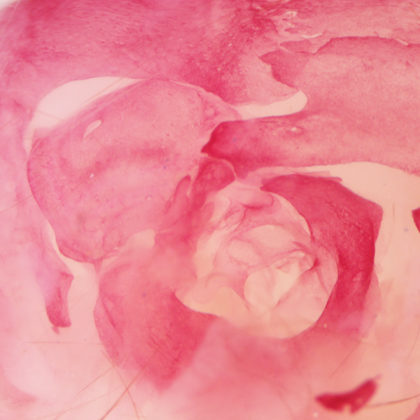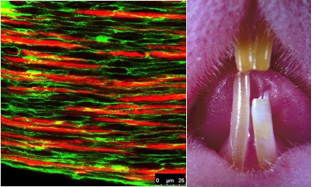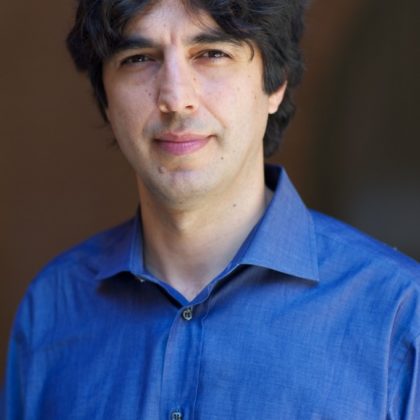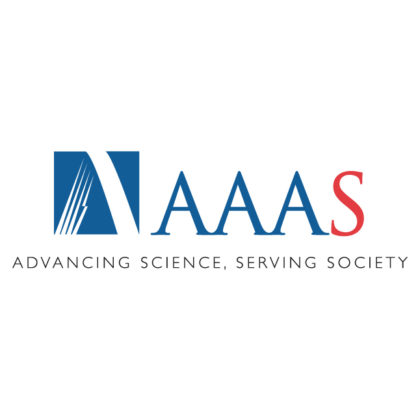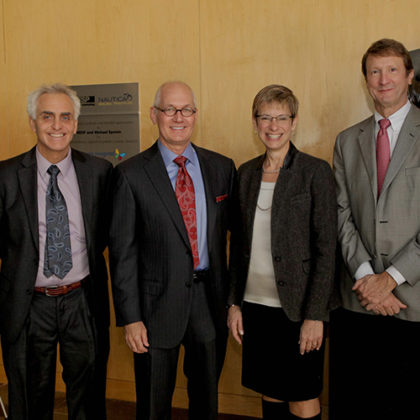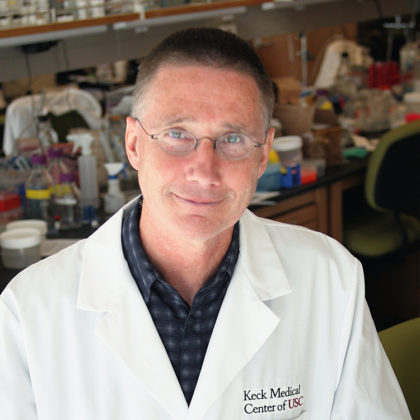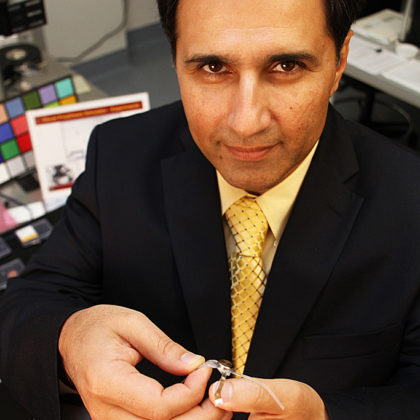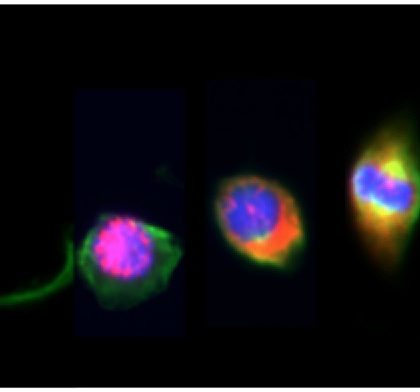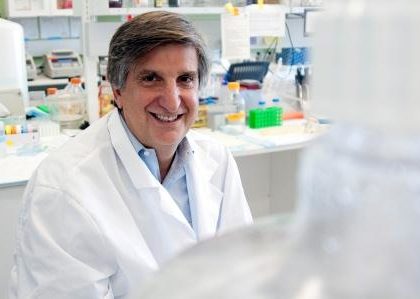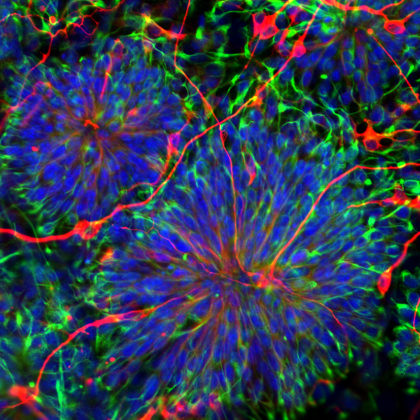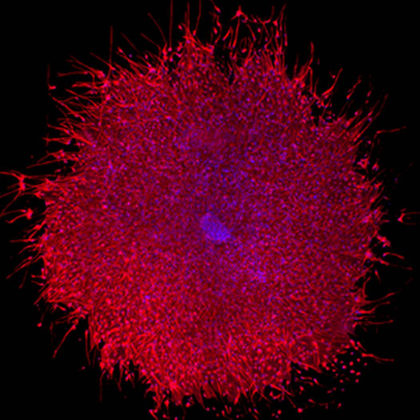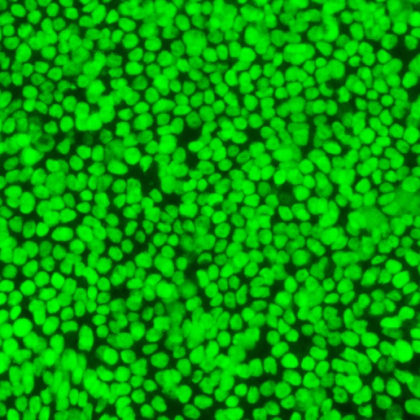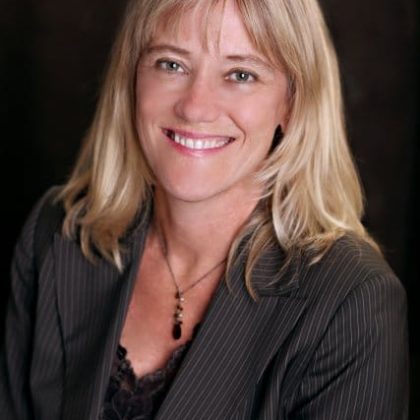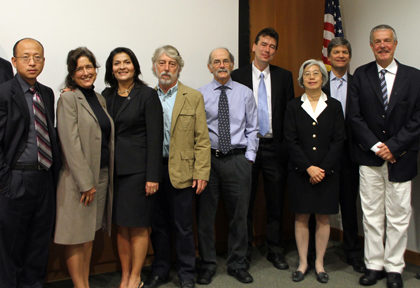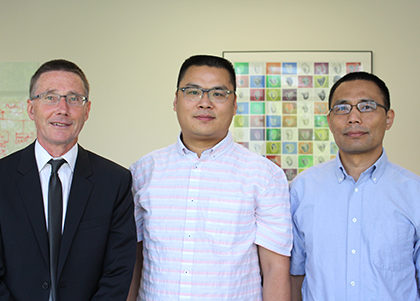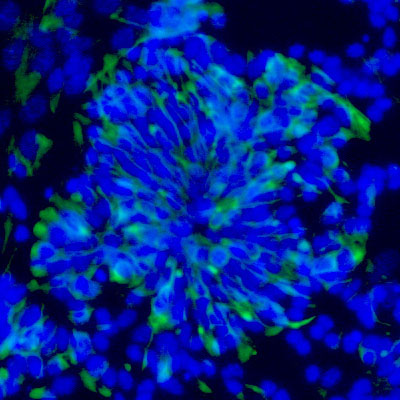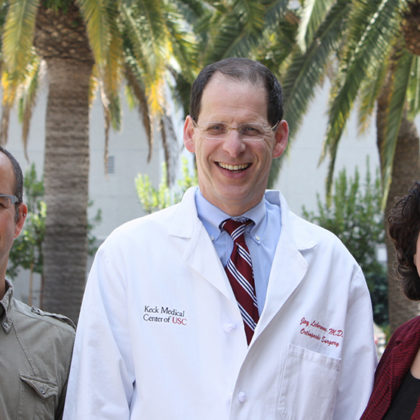Mark Humayun and David Hinton look to stem cells to bring sight to the blind
Video by Ryan Ball For years, people were throwing away cells that could bring eyesight to the blind. These dark, blackened cells looked like spots of contamination in the petri dishes in …
The Baxter Foundation supports innovative, young medical researchers at USC
In 1959, the Donald E. and Delia B. Baxter Foundation made its first grant of $6,000 to USC. Fifty-five years later, the foundation continues its tradition of supporting innovative medical research with …
Winner of the January 2014 USC Stem Cell Image of the Month Contest
Dr. Andy McMahon and the judges of the USC Stem Cell Image of the Month contest would like to congratulate our January 2014 winner, Camilla Teng, a graduate student in Dr. Rob …
Dental study provides wealth of stem cell details
An Ostrow School of Dentistry of USC study has uncovered new details on how bundles of nerves and arteries interact with stem cells and also showcases revolutionary techniques for following the cells …
Valter Longo seeks a recipe for longevity
Video by the USC Davis School of Gerontology Valter Longo, PhD, principal investigator with USC Stem Cell, is out to prove that gerontology is a young man’s game — just like rock …
Clinical trial to study loss of vision
Keck Medicine of USC research to slow vision loss for macular degeneration patients has been funded as part of the third round of the California Institute for Regenerative Medicine’s (CIRM) Disease Team …
Robert Maxson and five other USC professors named fellows of AAAS
Robert Maxson Jr., an executive committee member of USC Stem Cell, is one of six USC scientists to be elected fellow of the American Association for the Advancement of Science (AAAS).
USC and Children’s Hospital Los Angeles launch imaging lab for translational research
With the launch of the Translational Biomedical Imaging Lab (TBIL), investigators at the University of Southern California (USC) and The Saban Research Institute of Children’s Hospital Los Angeles moved us closer to a …
Hedgehog’s long snout finds a cure
In 1993, the Human Frontier Science Program (HFSP) funded three researchers through one of the program’s prestigious Research Grants to work jointly on patterning of the mid-hindbrain region of the vertebrate embryo. …
Humayun named first director of USC Eye Institute
University Professor Mark Humayun, internationally known for his work on the Argus II artificial retina implant intended to restore sight to the blind, has been named the inaugural director of the USC …
USC researchers apply brainpower to understanding neural stem cell differentiation
How do humans and other mammals get so brainy? USC researcher Wange Lu, PhD, and his colleagues shed new light on this question in a paper published in Cell Reports on October …
Pat Levitt elected to Institute of Medicine
Pat Levitt, provost professor of pediatrics, neuroscience, psychiatry, psychology and pharmacy at the Keck School of Medicine of USC, was recently elected as a member into the prestigious Institute of Medicine (IOM), …
Winner of the September 2013 USC Stem Cell Image of the Month Contest
Dr. Andrew McMahon, Dr. Seth Ruffins and the judges of the USC Stem Cell Image of the Month contest would like to congratulate our September 2013 winner, In Kyoung Mah, a graduate …
USC professors receive NIH funding for clinical trial of Alzheimer’s drug
USC Professors Roberta Diaz Brinton of the USC School of Pharmacy and Lon Schneider of the Keck School of Medicine of USC are principal investigators of a newly funded study from the …
USC researcher reveals how to better master stem cells’ fate
USC scientist Qi-Long Ying and a team of researchers have long been searching for biotech’s version of the fountain of youth — ways to encourage embryonic stem cells (ESCs) and epiblast stem …
Magnetic treatment for high-risk neuroblastoma proves less than attractive
Removing tumor cells with a magnet? It may sound strange, but researchers at Children’s Hospital Los Angeles (CHLA) and their colleagues recently explored whether this technique can create better outcomes for patients …
First Zilkha Alzheimer’s Mini-Symposium examines vascular system connections
Alzheimer’s disease is the sixth leading cause of death in the United States, and more than five million Americans live with the disease, according to the Alzheimer’s Association. Conquering Alzheimer’s was the …
Businessman invests in stem cell research at USC
Chinese businessman Yong Chen has pledged $1 million to USC stem cell researcher Qi-Long Ying to support his future “eureka moments.” “When I talked to Mr. Chen, I told him that groundbreaking …
A special protein helps embryonic stem cells keep their options open
In the ongoing quest to understand how embryonic stem cells (ESCs) retain their ability to differentiate into virtually any kind of cell, USC faculty member Qi-Long Ying and a team of researchers …
USC announces winners of first Regenerative Medicine Initiative awards
Three newly assembled disease teams within USC Stem Cell will take the early steps this year that might lead to future stem-cell based therapies for certain forms of deafness, bone defects and …
